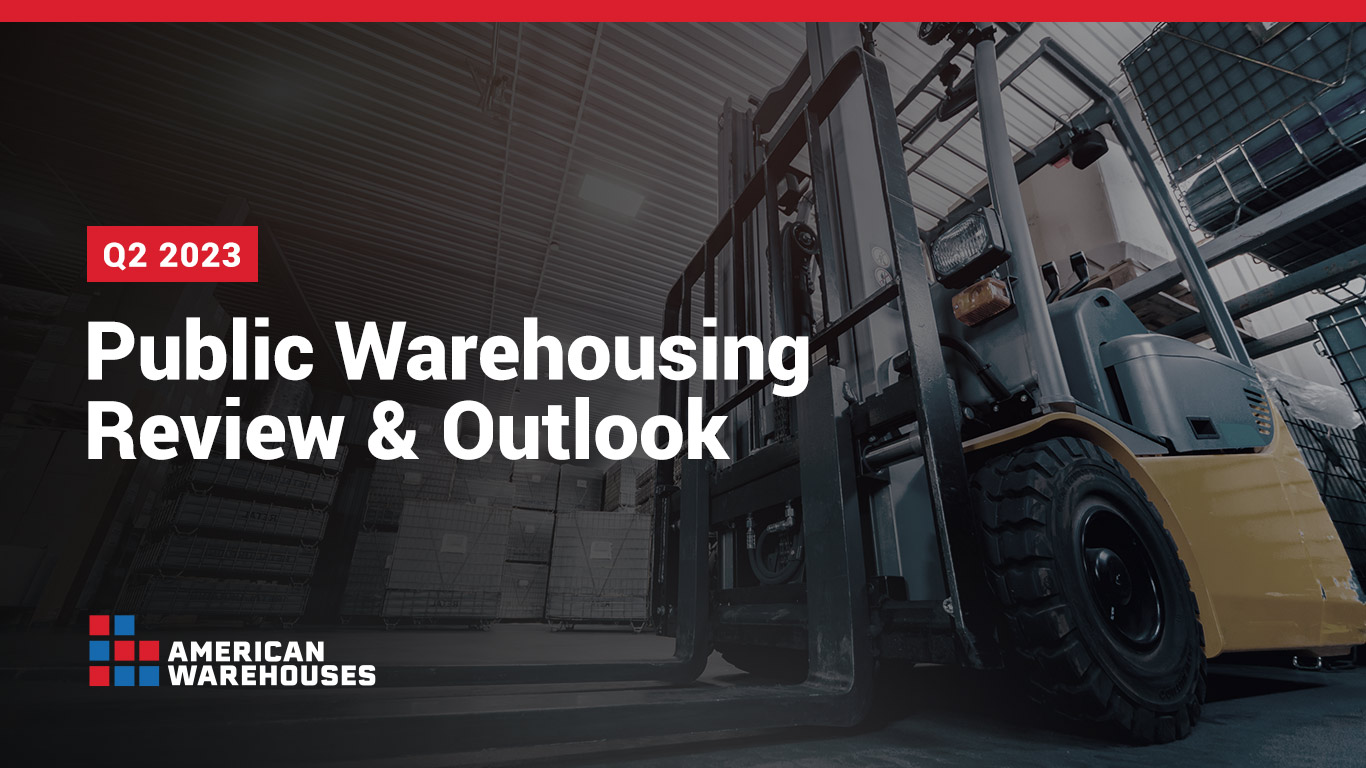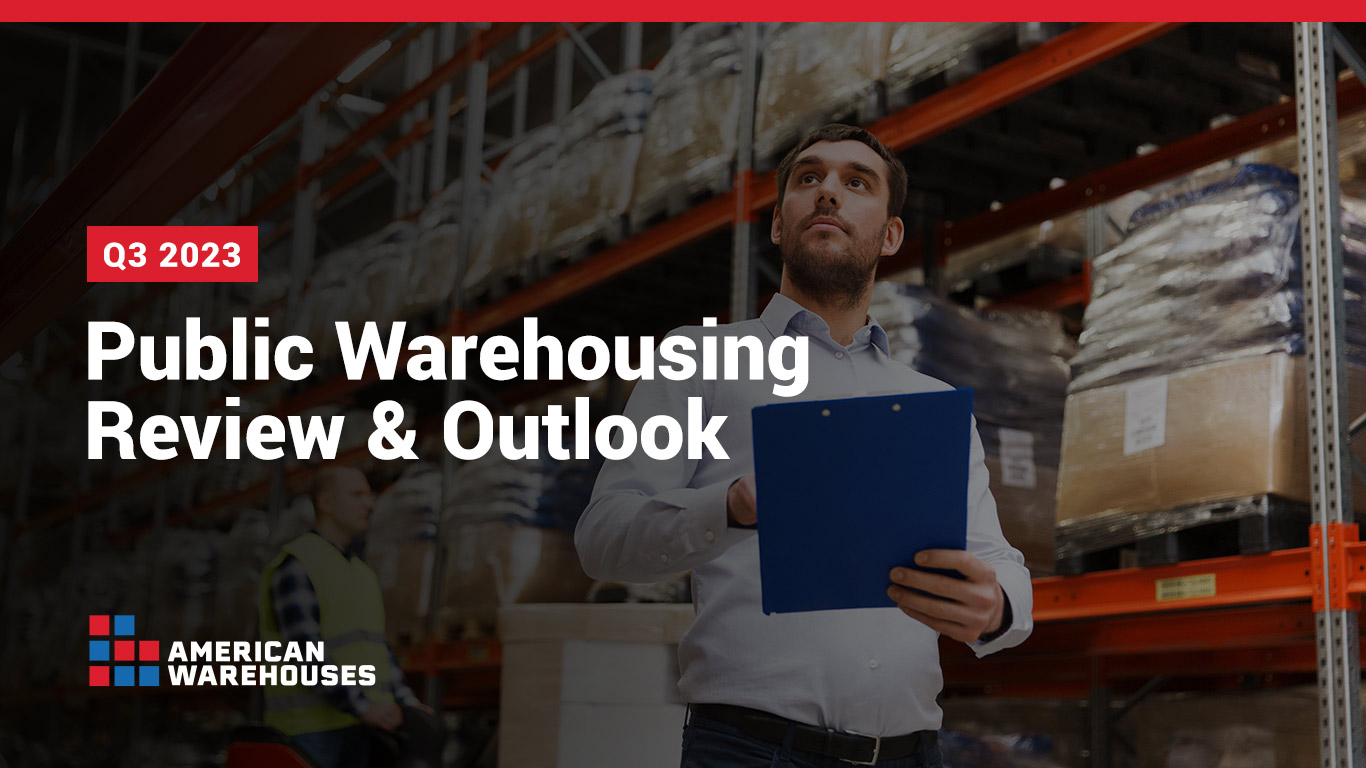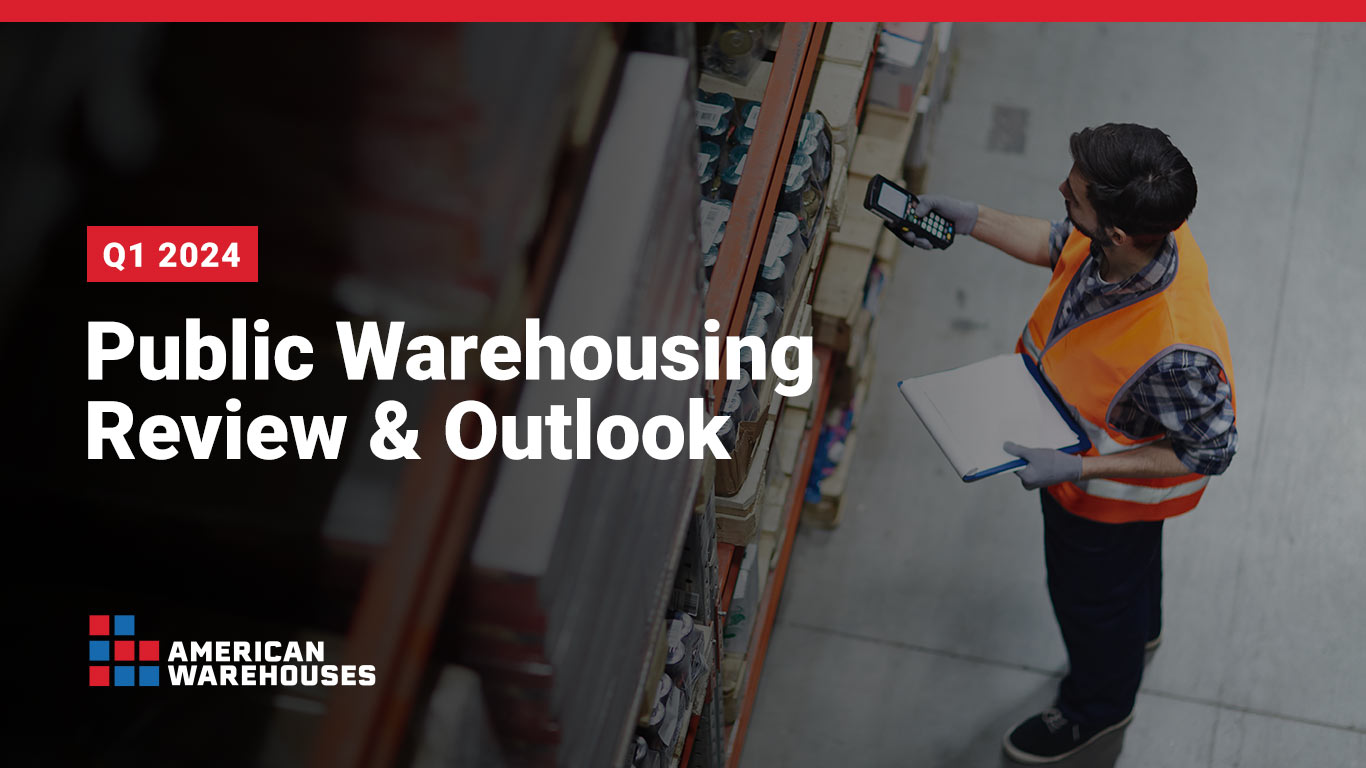Q2 2023 Public Warehousing Review & Outlook

As noted in the previous quarterly report, the public warehousing landscape is experiencing similar challenges and trends aligned with the supply chain and logistics industries. Given current freight rates, labor retention, and evolving technologies, the industry is on a similar trajectory.
These are even more important for public warehouses providing hazardous materials storage, regarding added safety and quality control measures. Technology within such spaces must always be at the forefront of efficiencies, compliance, and overall costs.
Despite several challenges faced within supply chain processes, public warehousing is a bright spot regarding growth. According to a report by Allied Market Research, its CAGR is expected to increase each year through 2030. The overall market size has moved up 3 percent just in the last year.
Public warehouses have also embraced technologies such as the Internet of Things (IoT), cloud computing, and data analytics for optimized operations, enhancing inventory visibility, and improving customer satisfaction. Environmental, social, and governance (ESG) initiatives are also gaining traction.
In this quarterly report, we’ll provide a second quarter recap, as well as discuss current predictions and related challenges, emerging technologies, and other trends shaping this evolving industry.
2023 Q2 Recap & Q3 Predictions
As noted earlier this year, Texas now claims the coveted top spot for public warehousing. With American Warehouses centrally located in Houston, this furthers our position as a comprehensive provider for shippers requiring safe storage of combustible chemicals, household products, and other potentially hazardous materials.
Texas’s close proximity to Mexico positions the state as a gateway for easy storage solutions, especially for cross-border distribution. Space will likely be at a premium, especially as shipment volumes from Mexico to the United States move forward.
- Public warehousing will also continue toward a focus on technology, sustainability, and consumer demand.
- Nearshoring will slowly increase as more North American shippers move goods out of China and invest within Mexico.
- To stay ahead of the curve in this competitive market, warehouses will need to embrace new automation tools.
- The growth of e-commerce and the expanding global marketplace have significantly heightened the importance of public warehousing.
Current Industry Challenges
While the challenges posed by the 2020 coronavirus pandemic are leveling off, public warehousing still has other obstacles to overcome, such as fluctuating demand, labor retention, and inventory management.
These issues and others were addressed during the Warehouse Education and Research Council’s (WERC) 46th Annual Conference in Orlando during June. Session speaker Adri McCaskill, General Manager at iPlan Global, discussed how despite overcoming the pandemic, the industry must still keep its eye on the “big picture.” This means effectively addressing additional challenges, while providing concise information and process changes—both long and short term.
- Modern warehouses must continually adopt new technologies, such as real-time tracking for optimized capacity planning, and improved resource management.
- Skilled labor and retention will continue to plague the warehousing industry. This also includes recruiting, especially during busy seasons. More emphasis will be on implementing new technologies, as well as smart warehousing.
- Public warehouses will seek to maintain inventory visibility and accuracy for efficient operations through barcode scanning, warehouse management systems (WMS), and radio-frequency identification (RFID) devices.
New Automation Technologies
With technology integration moving forward within public warehousing, this can also assist with the aforementioned challenge of skilled labor acquisition. According to a report by the Association for Supply Chain Management, this was also due in part to several changes during the 2020 pandemic, such as more e-commerce shipments, quicker delivery demands, and supply-chain bottlenecks.
IoT is also revolutionizing the warehouse industry through connectivity between physical objects and digital solutions. Providing real-time data on temperature, humidity, and location, public warehouses can easily manage storage conditions and shipment tracking. Robots within piece-picking are also becoming an effective alternative to traditional human-operated pick-and-packing stations.
Because public warehouses often hold high-priced goods with potentially dangerous materials, they’re often a hot commodity for theft. Integrating security cameras, video surveillance, smart locks, alarm systems, and access control can help prevent trespassing and criminal activities. Implementing cyber risk management systems is another precaution warehouses are taking to remediate any security loopholes, threats, and potential cyber attacks.
Additional technologies to watch during this upcoming quarter include:
- Autonomous mobile robots (AMRs) and robotic arms can perform tasks like picking, sorting, and packing with greater speed and accuracy.
- Cloud-based WMS and other data analytics tools will continue to transform warehouse operations, data visibility, and seamless collaboration and customer service.
- Smart warehousing will continue to advance in the public warehousing sector. This includes robotics for depalletizing, as well as streamlining order picking, and quick identification. Other devices include wearable scanners, smart glasses, and pick-to-light solutions.
ESG Initiatives
ESG will continue to gain traction as more shippers adopt green practices. These initiatives include energy-efficient lighting, smart technologies, and other alternative energy sources. This will also undoubtedly attract like-minded customers sharing a common goal of a greener, sustainable supply chain
According to research findings from WERC’s annual DC Measures report, awareness must be raised regarding ESG, and real conversations must be occurring now.
Other key survey findings included:
- The industry is “laser focused” on customers. This includes on-time shipments free of damages with correct documentation.
- 60 percent of respondents said adopting ESG would help position their companies above the competition.
- Researchers also discussed why now is the time to set goals, collect data, and create an internal ESG process
The Takeaway
Logistics and supply chain management are constantly evolving, driven by advancements in technology, changing consumer demands, and the need for greater efficiency. Within this context, public warehousing plays a vital role, serving as a crucial link in the supply chain.
Choosing an experienced operator who has the knowledge and expertise to handle hazardous materials and combustible chemicals is critical when making the right decision. At American Warehouses, we offer all of this and more, as well as advanced technologies, careful handling, and quality control, regardless of circumstances and any unforeseen challenges.

